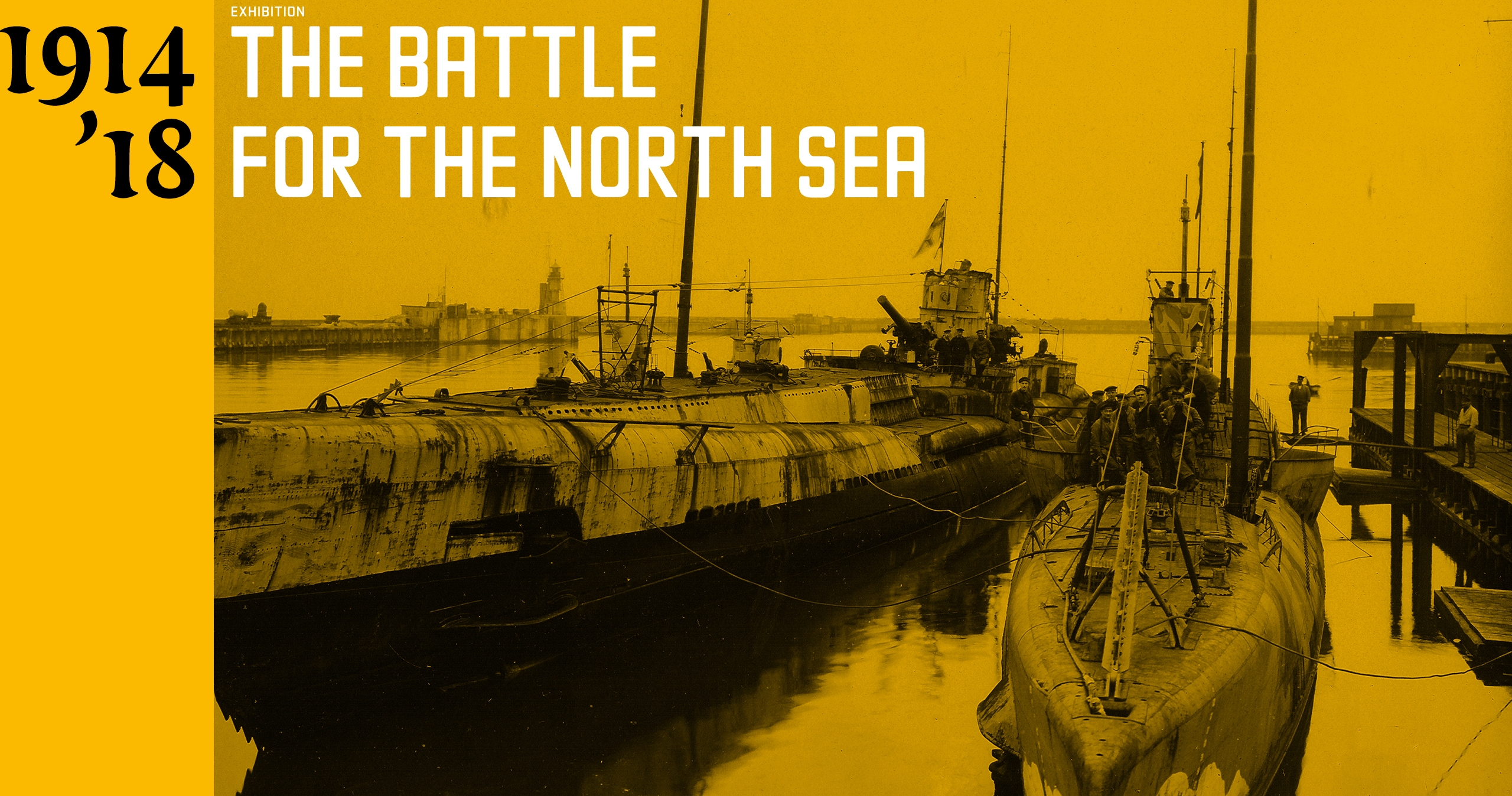19 / 04 / 2018

Submarine warfare and the British response
Winston Churchill once said: “The only thing that ever really frightened me during the war was the U-boat peril.” For four years the occupied harbours of Bruges, Ostend and Zeebrugge were the base of operations for an impressive fleet of German submarines. These underwater vessels sank no fewer than 2.5 million tons of waterborne transport – 2,554 allied vessels. Great Britain was pushed to the brink of famine and surrender. But on 23 April 1918, St. George’s Day, the Royal Navy struck back, embarking on a daring naval action to take down the heavily defended submarine harbours. A fleet of 136 ships attacked the harbours of Zeebrugge and Ostend simultaneously. An hour of intense battle led to the awarding of more Victoria Crosses – Great Britain’s highest military distinction – than ever before for a single action. These 11 Victoria Crosses have been reunited for the first time and will be on display at the exhibition, barely fifteen kilometres from the location of the attack 100 years ago.
A treasure trove of fascinating pieces
In addition to the Victoria Crosses, the exhibition will also showcase the first relics retrieved from the UB-29. This German submarine, which was stationed in Bruges during WWI, made international news last summer when it was discovered off the coast of Ostend, and was declared a war grave. The hatch of one of its torpedo tubes and an almost perfectly intact cannon barrel – salvaged last month, after it was found in the vicinity of the wreck – will be gifted to Hamburg’s International Maritime Museum once the exhibition is over. The wreck of UB-29 is currently under protection. Of the 11 submarines that have been found in our waters, UB-29 is one of the most intact. The submarine made history on March 1916 when it torpedoed the SS Sussex without warning. Among the wounded were a great many American citizens, which elicited strong protest from the American President Wilson. On 13 December 1916, UB-29 went missing. Until last year, it was thought that it had sunk off the coast of Dover, but it turned out the vessel met its demise off the coast of Ostend. All of the 22 crewmembers perished.
Another stunning piece in the exhibition is a complete WWI torpedo, weighing 700 kg. The torpedo is property of the War Heritage Institute and was delivered under secure escort a month ago. The exhibition is richly supplemented with exceptional photos and artfully-designed instruments, rare secret U-boat manuals, highly detailed models and artists’ impressions of U-boats, and the personal effects of crew members from both the German and the British side.
This exhibition also pays a lot of attention to the human stories on both sides. Though a Victoria Cross might recognise ‘extraordinary courage’, it could never bring the heroes back. The communication surrounding the raids, including the awarding of an exceptional number of bravery medals, was partly intended to keep spirits buoyed on the home front.
Exhibition in the lion’s den
The exhibition ‘14–‘18, The Battle for the North Sea takes place in the lion’s den: it was from the Provincial Court on Bruges’ Market Square – a building designed by architect Louis Delacenserie, who also drew up the plans for Antwerp’s Central Station – that the German Kriegsmarine (Imperial Navy) orchestrated its much-feared U-boat campaign during WWI. Visitors will be immersed in the history of the Unterseebootsflotille Flandern – Germany’s U-boat flotilla stationed at our harbours – and will be able to get a feeling of the intense atmosphere on board a U-boat, while also learning about how the crew spent their leisure time in port. The British response to the German U-boat peril is also explored and the tension of the attacks on Zeebrugge and Ostend evoked. Finally, the exhibition reflects on the end of the battle at sea, on the memory of those who perished and the human story behind it all.
The organisation
The exhibition ‘14 – ‘18, The Battle for the North Sea is an initiative of the Flanders Maritime Institute (VLIZ), subsidised by Toerisme Vlaanderen in the context of the touristic incentive programme ‘2014-18 – The Great War Centenary’. The exhibition has been realised in collaboration with the War Heritage Museum, Westtoer, the City of Bruges and the Province of West Flanders, and made possible by the support of many sponsors, including the National Lottery. The project was led by an advisory committee under the supervision of the Governor of West Flanders, Carl Decaluwé, who is also Chairman of the Flanders Maritime Institute. Marine archaeologist and diver Tomas Termote is the curator of the exhibition. Termote has carried out extensive research into shipwrecks, including those in the North Sea, and has written many publications on the subject. Koen Bovée was responsible for the exhibition’s scenography. The pieces on display have been borrowed from the Imperial War Museums, Library and Archives Canada, the U-boot Archiv Cuxhaven, the International Maritime Museum of Hamburg, the Provincial Domain of Raversijde, Museum Sincfala and a number of private individuals.
The expo opens its doors to the public from Monday 23 April and runs until 31 August 2018. Open every day, except on Sundays. Practical information can be found on the website of the expo: www.vliz.be/battle-for-the-north-sea